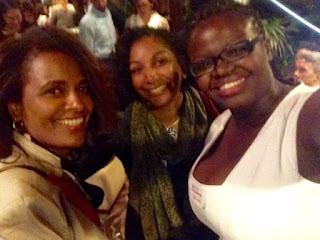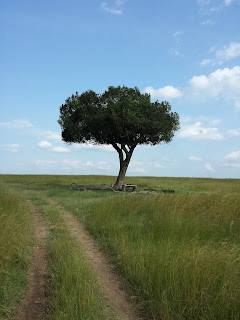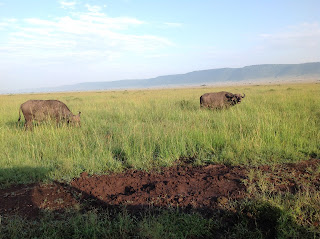A lot can change in a year. Circumstances, lifestyle,
workplace, relationships….perspective. As
most of you know, this time last year, almost to the day, I attended We Day in
Toronto for the second time and was once again overwhelmingly inspired by the energy
and passion of the youth that were there. On that very same day I applied for a
Junior Professional Consultant position with UNA-Canada. Six months later I was offered a position with the Education team in the UNICEF Kenya Country Office.
My goal in taking this position with UNICEF, halfway around
the world from Canada, was to gain relevant knowledge and experience to advance my
career in development work. An aside, another
change is that I’ve stopped calling it “International Development” work. When
you live in a country and become really connected with the people it ceases to
feel “International”. It has been my work that has had the most profound impact on me over this half year, far beyond my career aspirations. |
| Branded! |
Like all of you, I cannot stand the thought of any sort of child
abuse whether it is neglect, exploitation, physical abuse, etc. And
when you see or hear about young boys and girls who are denied the right to go
to school and instead are found working, married, or on the streets addicted to
alcohol and drugs it’s really heartbreaking. Poverty strips away all of the options that most of us take for granted.
In particular, two trips to the field really made it clear for me why drastic change
is so badly needed here in Kenya.
At the beginning of my placement I learned that much of our programming was targeted at the ASAL (Arid and Semi-arid Lands) counties and I was a bit confused as to why we were not working in all 47 Kenyan counties. However, on a recent visit to the county of Turkana I was able to see firsthand how little resources this arid region (basically the desert) has.
 |
| One of the remote schools in Turkana |
I saw a place where you could drive for many kilometers and only see one or two schools. The roads are beyond terrible, water is scarce, nothing grows there
except skeletal trees, and even teachers don’t want to work there. How can you
expect children to go to school under these circumstances? And if they are able
to get to school, there are not enough resources like classrooms, desks, and books to accommodate them. The sad truth is, most of the girls will
be promised in marriage at 9 or 10 years old and become mothers when they are
just teenagers. The boys will probably take some menial job or move to the
closest city and wind up in the slums.
 |
| The beads signify these girls are promised in marriage - they will never go school |
The second eye opening visit was just recently in my last
two weeks with UNICEF. In preparation
for a new program on out-of-school-children we conducted two visits to the
informal settlement (i.e. slums) of Korogocho and the nearby garbage dump of
Dandora in Nairobi. Unbelievably, it was just 15 minutes from where I live that
I saw things that will haunt me forever.
On my first visit I was actually impressed
with how the area of Korogocho was built up. Mostly tiny corrugated tin houses but
a lot of people doing various businesses of selling everything from fruits and
vegetables to used clothing to pots and pans and tools. So many people were
washing the dirt and dust off of their motorcycles, obviously taking pride in
their possessions. The boda boda business
of ferrying people to and from town on motorcycles, sometimes whole families,
is extremely popular all over Kenya. This felt like a bustling mini-city
with a booming economy. Of course, during the day, from the comfort of a UNICEF
vehicle, you don’t see the black market business of alcohol, drugs, and
prostitution. And you cannot even
imagine what goes on behind closed doors.
 |
| Hard to believe eight families live beyond this doorway |
On my second visit I interviewed two young and extremely bright out of school adolescents living in Korogocho. The realities
of being born into a slum became evident. Judith had finished primary
school despite awful circumstances at home but could not afford to continue on
to secondary school. She told us that every day she collects whatever she can
from the dump to sell and tries not to get raped. She sleeps in a 6'x6’ shack
with her mother, two sisters, and one brother. There is one window, a small
jiko for cooking, water collected from a nearby tank at five shillings per jerry
can, and an outhouse around the corner shared by seven other families in similar
houses in the same square.
 |
| Judith - photo by A. Ohanesian |
Going to the dump itself was actually scary. If you’ve never
been surrounded before by giant vultures amidst decomposing, stinking garbage
count yourself lucky. And even more so if you don’t have to see a child in
filthy clothing walking barefoot among broken glass to pick up a scraps of
plastic that he will sell for maybe 40 shillings (about 40 cents) a bag or a
man pick up and eat a rotting piece of fruit and then smile at you because he’s
happy he has something to eat that day. What makes you feel even more sick to your
stomach is seeing all the pizza boxes or empty airline packaging and knowing
that children are living off of the food that you threw out as you were traveling
in complete comfort and security.
 |
| Foraging in Dandora dump - photo by A. Ohanesian |
John is in, perhaps, a more favourable situation. Although also
a reluctant dropout he has somehow discovered and is pursuing his talent for
dance and acrobatics. Every day, he runs to keep in shape and trains with his troupe.
I unfortunately didn’t get to see him perform but he did try to teach me a few
breakdancing moves! I was not very good but none the less I was really
impressed with his skill and enthusiasm. The reality is that most likely this
will not lead to any real sort of income for John but in the meantime it keeps him from
engaging in otherwise dangerous or illegal activities. And it brings him and
those around him joy.  |
| John - photo by A. Ohanesian |
 |
| Beauty in Korogocho |
They say “A journey of a thousand miles starts with a single
step”… and one year ago I started mine.












































